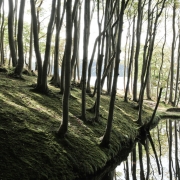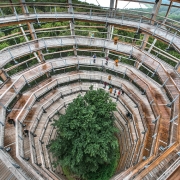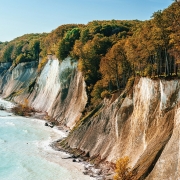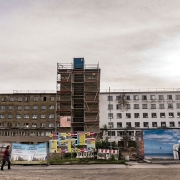
Etcetera
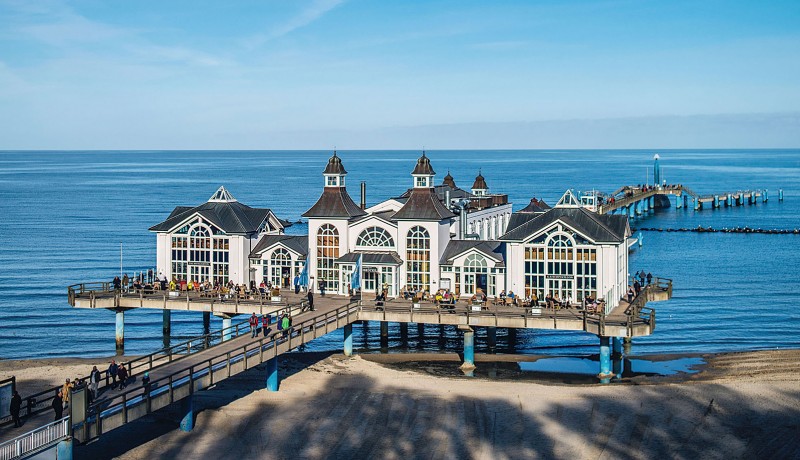
Dotted with white-chalk cliffs, pristine beaches and Gothic architecture, Germany’s biggest island Rügen is in a league of its own
Driving next to the glittering Baltic coast, surrounded by hearty Germans tucking into herring sandwiches, I realised that East Germany is unlike any other part of the country I’ve seen before. It has a kind of charm that vaguely differs from that of the south or the neighbouring Frankfurt in the west.
With an area of about a thousand square kilometres, Rügen is Germany’s biggest island. In its southeast are a host of resorts whose architecture is an amalgamation of different styles from different periods. In the north lies Jasmund National Park with its iconic white-chalk cliffs and a rare beech tree reserve. Travel a few kilometres to the west and you will step back in time at the coastal town of Prora, where Hitler once envisioned the world’s largest seaside tourist resort.
I was told by our guide that the island of Rügen was a popular tourist getaway as long back as the 19th century and visited by the likes of Bismarck and Albert Einstein. Incidentally, its chalk coastline was immortalised by Romantic artist Caspar David Friedrich in 1818. However, Rügen fell into oblivion as the German Democratic Republic (GDR) took over East Germany. But with shifting time and power, and with cheap flights and trains connecting Rügen with Berlin and Hamburg, the island came into prominence once again.
The gateway to the island is Stralsund, a Hanseatic town that dots the skyline with its Gothic red-brick churches. From Stralsund, there is a stunning 2,800-m bridge that takes you to Rügen.
During our three-day stay, the town of Sellin was our base. One of the highlights of the town is Seebrüce, a wooden pier with a spectacular house on it with a worldclass restaurant-bar that serves top German beers. You can also catch the most stunning sunrise in the world here.
The northeast coastline of Rügen has vast expanses of white sand beaches and white chalk cliffs, the latter being the relics of the last Ice Age. During storms, the eroding chalk cliffs in the National Park of Jasmund are known to spew fossils of oysters and sea urchins. The vast expanse of beech trees in the park makes it a UNESCO World Heritage Site. Lynx, wolf and bear are part of this fascinating wilderness. The rare sea eagle also breeds here regularly.
A few kilometres away from the park is the notorious site of Prora, with identical buildings lined up along the beach for as far as 4.5 km. Hitler’s original plan was a lot more ambitious, with buildings spanning 8 km and all rooms with a seaside view. The war, however, put an end to his plans and the facility remained unused. Though not a place that makes for happy memories because of its history, Prora, as I discovered, is still a massive draw for international tourists. Local authorities have now started selling parts of the resort to the general public as independent holiday apartments.
My favourite part of the trip was a visit to Baumwipfelpfad, a 2-km canopy walk ending at a 40-m tower that offers some of the most amazing views of the island. The entire way is easily manageable with a stroller. On the way are information stations with interesting facts about the woods and the bird species that inhabit them.
As I called it a day, I saw a majestic white-tailed eagle, native to the island, spread out its wings and take a flight far away into the horizon.
FACTFILE
WHEN TO GO
Though it’s fairly okay to visit Rügen any time of the year, you may want to avoid winters. The weather is warm and sunny between March and September.
VISA & CURRENCY REQUIREMENT
As Germany is a part of the EU and shares the common currency, getting Euros is never a problem. If you are visiting Germany and other European countries, it is best to carry a travel card issued by your bank. As Indian nationals, it’s mandatory to obtain a Schengen visa. The maximum validity of the visa can be up to a period of three months.
GETTING THERE
The best way to reach Rügen is by taking a flight to Berlin and then taking a train (€ 50 per person). Alternatively, you can take a bus from Berlin (€ 15).
Text & Photographs by Devesh Joshi Featured in Harmony — Celebrate Age Magazine May 2018
you may also like to read
-
Cracking the longevity code
Small yet impactful choices can be game-changers, writes Srirekha Pillai At 102, there’s no stopping Chandigarh-based Man Kaur, the world’s….
-
Home, not alone
While a regulatory framework is vital for senior-care facilities, the need of the hour is to develop an ecosystem to….
-
Birthday Girl
Published in a special edition to honour Japanese master storyteller Haruki Murakami’s 70th birthday, Birthday Girl (Penguin; Rs 100; 42….
-
A huge treat for music lovers
Published as the revised and updated second edition, Incomparable Sachin Dev Burman (Blue Pencil; Rs. 599; 470 pages) the authoritative….



